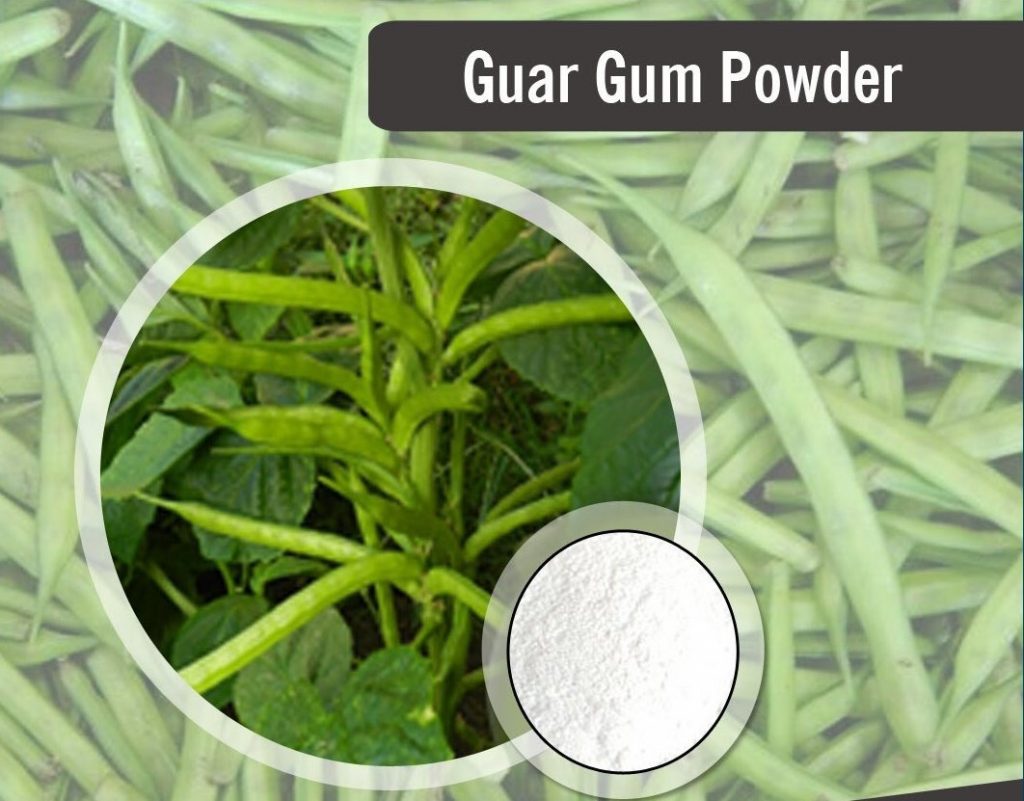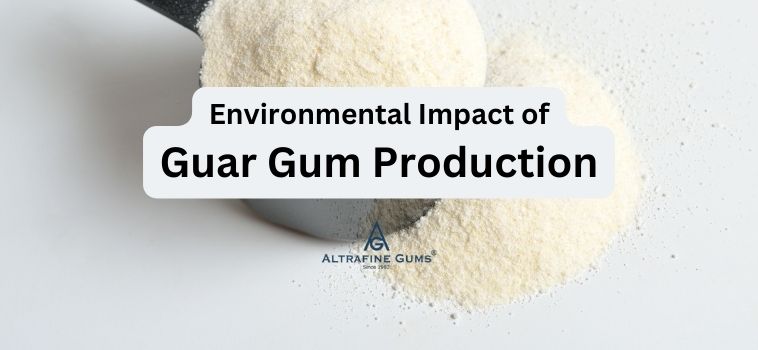As the global demand for natural and sustainable ingredients continues to rise, Guar Gum has garnered attention for its wide applications and eco-friendly reputation. Extracted from the guar plant (Cyamopsis tetragonoloba), guar gum is a natural thickening and stabilizing agent used across industries, particularly in food, cosmetics, and pharmaceuticals. But beyond its functional benefits, the cultivation and production of guar gum offer significant environmental advantages compared to other natural additives. In this article, we will explore the environmental impact of guar gum production, highlighting its sustainable practices and how it contributes to more eco-friendly product formulations.
Overview of Guar Gum’s Cultivation and Harvesting
The guar plant is primarily grown in arid regions, with India and Pakistan being the largest producers of guar gum. The plant thrives in hot, semi-arid climates, requiring minimal water for growth, making it highly suitable for regions with limited water resources. Guar plants are hardy and resilient, growing well in poor soils without the need for chemical fertilizers or pesticides. This natural resilience reduces the need for intensive farming practices, which can be detrimental to the environment.
The harvesting process of guar gum involves extracting the endosperm from the guar seeds, which is then processed into a fine powder. The production process is relatively low-impact compared to other additives, as it does not require harmful chemicals or excessive energy consumption. Additionally, guar gum is biodegradable, ensuring that it does not contribute to environmental pollution when disposed of or used in various products.

Comparison of Guar Gum Production with Other Natural Additives
When compared to other natural additives such as xanthan gum, locust bean gum, or carrageenan, guar gum stands out for its relatively low environmental impact. Xanthan gum, for example, is produced through bacterial fermentation, which requires a controlled lab environment and the use of sugars derived from corn, soy, or wheat. This process can involve significant energy usage and resources, leading to a larger carbon footprint.
On the other hand, guar gum is derived directly from a plant that grows naturally in arid conditions, requiring fewer resources for cultivation and processing. Locust bean gum, sourced from the seeds of the carob tree, also requires intensive labor for harvesting and processing, as the trees take years to mature. Carrageenan, extracted from red seaweed, often involves large-scale aquaculture, which can disrupt marine ecosystems.
In contrast, the guar plant can be grown annually and harvested with relatively low environmental disturbance, making guar gum a more sustainable option compared to some other thickening agents.
Sustainability Practices in Guar Gum Farming
Sustainability is increasingly a focus for guar gum producers, who have begun adopting practices that further minimize environmental impact. Many farmers use organic farming techniques, avoiding synthetic fertilizers and pesticides that can degrade soil quality and contribute to water pollution. Guar plants, as nitrogen-fixing crops, also improve soil fertility by enriching it with essential nutrients, reducing the need for chemical inputs in subsequent crop cycles.
Additionally, initiatives aimed at rainwater harvesting and water conservation have been implemented in regions where guar is grown. Since guar plants require minimal water, they are often grown in rotation with other crops that demand more resources, allowing for more efficient land use and reducing the strain on water supplies in dry regions.
Many guar gum producers are also focusing on fair trade practices, ensuring that the farmers growing the crops are fairly compensated. This ethical approach to guar gum production not only supports local economies but also encourages sustainable farming practices that preserve the environment for future generations.
How Guar Gum Supports Eco-Friendly Food and Product Formulations
Guar gum’s role in eco-friendly formulations goes beyond its sustainable cultivation. In the food industry, guar gum serves as a natural alternative to synthetic thickeners and stabilizers, which often have a higher environmental impact. Its ability to improve the texture, consistency, and shelf life of products without the use of artificial chemicals aligns with the growing consumer demand for clean-label products.
In addition to food, guar gum is used in a variety of personal care products, such as shampoos, conditioners, and lotions, providing an effective natural alternative to synthetic chemicals that can be harmful to both humans and the environment. Its use in biodegradable formulations helps reduce the presence of microplastics and other pollutants that often result from synthetic ingredients in personal care products.
Moreover, guar gum’s contribution to vegan and dairy-free product formulations highlights its alignment with sustainability trends. The production of vegan and plant-based foods often has a lower carbon footprint than animal-based products, and guar gum’s role in improving the texture and stability of these products makes it an essential component of the plant-based food movement.
Conclusion: Why Guar Gum is a Sustainable Choice for Industries
In an era where environmental sustainability is a top priority, Guar Gum offers industries a natural, eco-friendly solution that aligns with both consumer demands and environmental goals. Its cultivation and production processes require fewer resources, minimal water, and little to no chemical intervention, making it a sustainable alternative to other natural additives. With its versatility in food, personal care, and pharmaceutical products, guar gum plays a crucial role in helping manufacturers create clean-label, biodegradable, and eco-conscious formulations.
As more industries prioritize reducing their environmental footprint, guar gum stands out as a sustainable choice that not only benefits consumers but also helps protect the planet.
FAQs About Guar Gum
1. How is guar gum more sustainable than other natural additives?
Guar gum is more sustainable because it is derived from a hardy plant that requires minimal water, chemical inputs, and energy for cultivation and production. Compared to additives like xanthan gum or carrageenan, which require more intensive processes, guar gum’s production has a lower environmental impact.
2. What sustainability practices are used in guar gum farming?
Sustainability practices in guar gum farming include organic farming methods, water conservation techniques, crop rotation, and fair trade practices. Guar plants also enrich the soil by fixing nitrogen, reducing the need for chemical fertilizers.
3. Is guar gum biodegradable?
Yes, guar gum is biodegradable, making it an environmentally friendly choice for products in various industries. It breaks down naturally without causing harm to ecosystems, unlike some synthetic additives.
4. How does guar gum contribute to eco-friendly food formulations?
Guar gum serves as a natural thickener and stabilizer in food products, providing an alternative to synthetic chemicals. It helps improve the texture, shelf life, and consistency of products while aligning with clean-label trends and consumer demand for natural ingredients.
5. Can guar gum be used in vegan and plant-based products?
Yes, guar gum is widely used in vegan and plant-based products, such as dairy-free alternatives, to improve texture and stability. Its plant-based origin makes it suitable for a variety of eco-friendly and vegan formulations.

